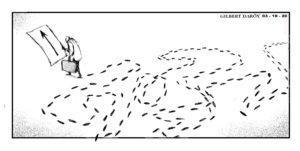I just attended a meeting on the utilization of online learning materials, as our university is about to use these to aid the continuation of our classes amid the COVID-19 outbreak. For this so-called distance learning method to be effective, a student will need a computer and a stable internet connection.
Earlier this week, the university tasked each faculty member to conduct a survey in our respective classes to assess our students’ access to virtual learning. The survey asked how many students have computers and internet access in their homes. All my students in four classes have computers. But some of them do not have access to the internet when they go home.
I wonder about other students in the country who do not have internet access, let alone computers and gadgets. What will happen to their learning when the school suspends classes? How are they going to have access to virtual and online learning materials?
The presence of technology and digital classrooms are manifestations of a modern education system. We see that distance is being overcome. The physical presence of warm bodies is not necessary for a class to be held. The virtual reality at the tip of our fingers has made this possible.
While the presence of technologies is one good story of innovation, access to them is another. This issue is rooted in the larger social problem of digital inequality. Only those who have the resources to buy gadgets and to avail themselves of an internet connection in their homes are privileged to continue their learning despite the physical distance. They are secure that their education is not compromised in times like this.
The adjustments done by universities for ongoing teaching through online resources reveal an impressive solution. But the situation also unearths the reality that income and social inequality breeds digital inequality. When they go back to school, the poor will have to make up for the lessons they missed in the online classes.
Online classrooms, internet resources, and digital technology have become remarkable modes of closing the physical distance and making education perpetual and accessible. But we must ask, “for whom?”
Students can only go so far as their access to technologies. There are greater gaps that we need to close if we want everyone to go the distance.
PRINCE KENNEX R. ALDAMA
Department of Social Sciences
UP Los Baños
aldamaprince@gmail.com


